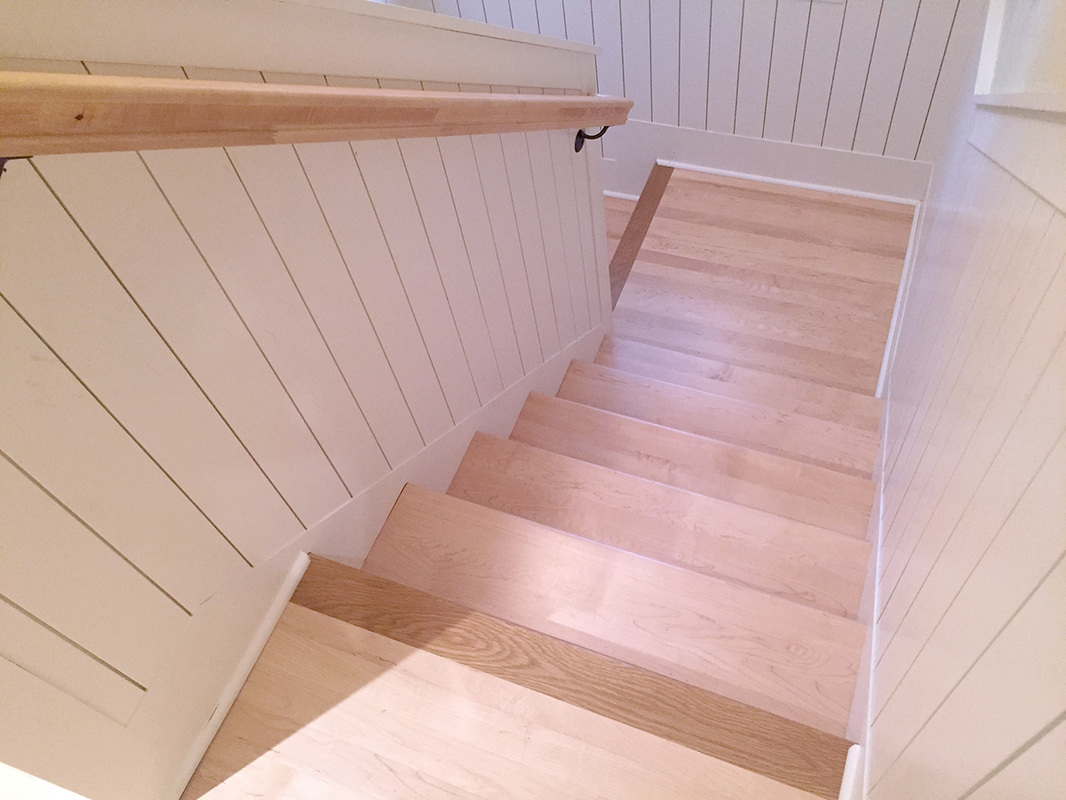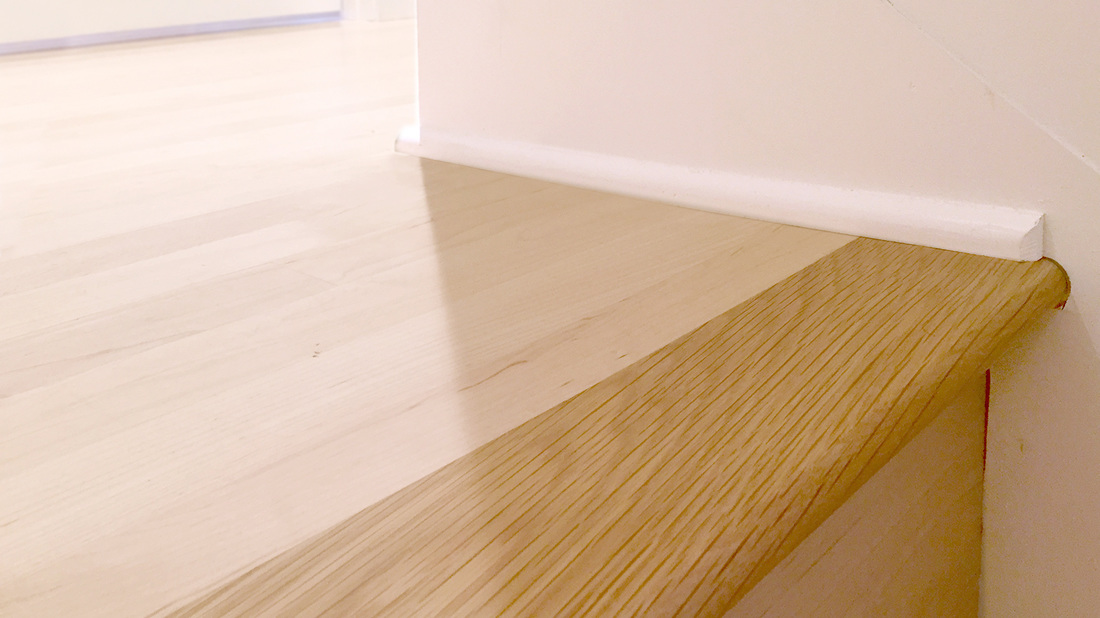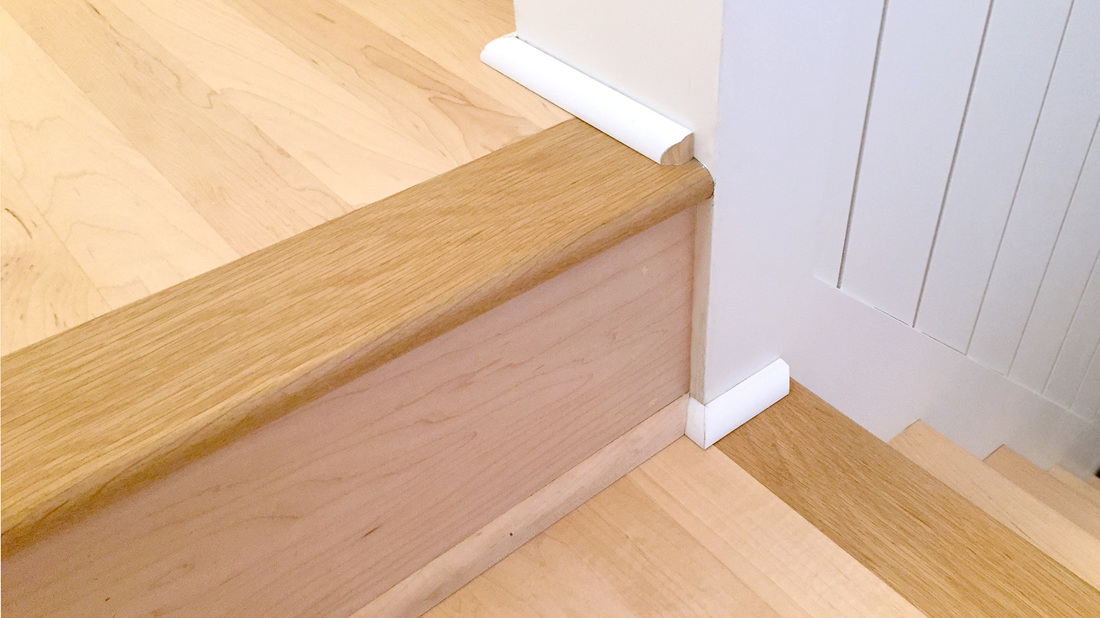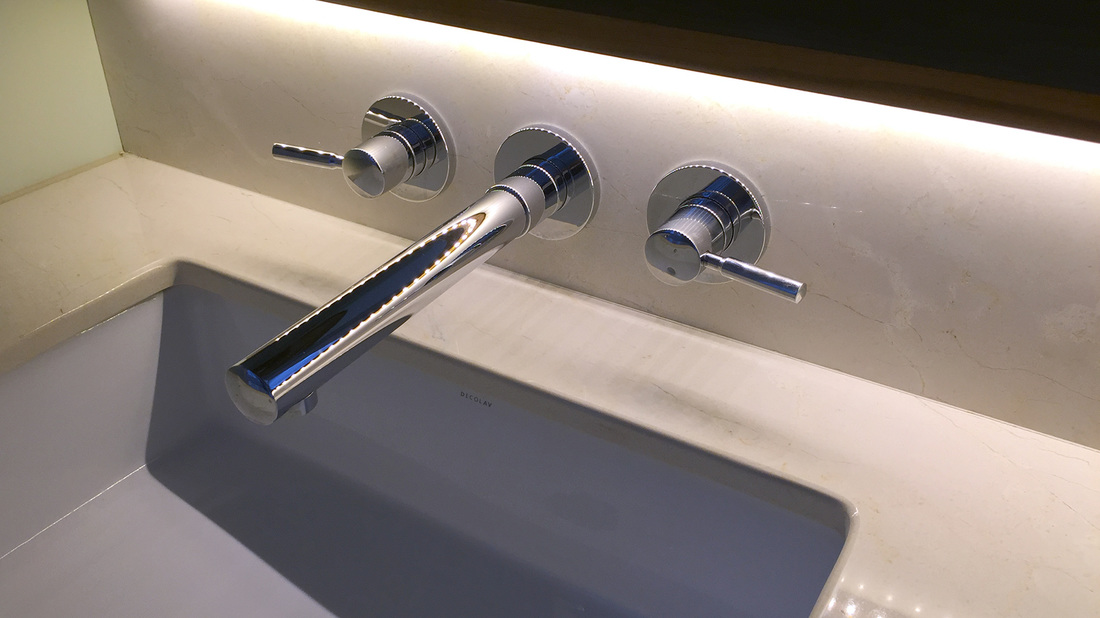|
BEING NOSY Some design solutions are obvious, others are more subtle. Changing the wood species of the stair nosing at the top of the steps and landing qualifies as a subtle solution that introduces a unique visual aesthetic, but also a measure of safety. The First Step
For all of us - the you and the old - the most dangerous moment descending the stairs is the first step. Not seeing the stair nosing or tread can be scary, even dangerous. Being able to see all of the floor level changes clearly before entering the stairway dramatically reduces the change of falling down a flight of stairs. To address this concern, we altered the wood species of the stair nosing to highlight the change in the floor level. A clear, blonde maple hardwood makes up the floor, and a red oak stair nosing provides a simple, yet obvious delineation between hallway and stairs. Source of the Solution It's a solution pulled from my experience as a commercial architect. When designing public buildings, any change in floor level is required to be highlighted by a change in color or texture. The edge of a train platform or the curb at an intersection are prime examples. Rather than painting the nosing safety yellow, we simply altered the wood species to make the new space safer for everyone. Here, the first step in the stair run and at the landing, red oak stair nosing contrasts with the blonde maple tread. > See more images of this project Design is not always about aesthetics. In fact, I have found that pragmatic, nuts and bolts design solutions can be as impactful as beautiful tile or countertops. Making a home "work" is often about solving less glamorous, real-world concerns, such as safely descending a beautiful new staircase.
5 Comments
One of the most wonderful advances in lighting is the flexibility and opportunity offered by LEDs. Not only do they use a fraction of the energy, they don't get hot, they are dimmable, and they are smaller and flexible.
Here we have installed an adhesive strip of LED diodes into a routed channel in the walnut ledge above the countertop. The LEDs can be cut to any length and use only 1.4 watts/foot. It's a perfect application that's both invisible and acts as a grown up night light! Another similar application is to route a channel in the bottom of a wood handrail, where the LED lights illuminate the stairway at night. In any application, this solution is most easily done when the walls are open, offering access to run low voltage wiring. |
4108 Drew Avenue, Minneapolis, Minnesota 55410
©DAVID LUND DESIGN, 2015-2022. ALL RIGHTS RESERVED









